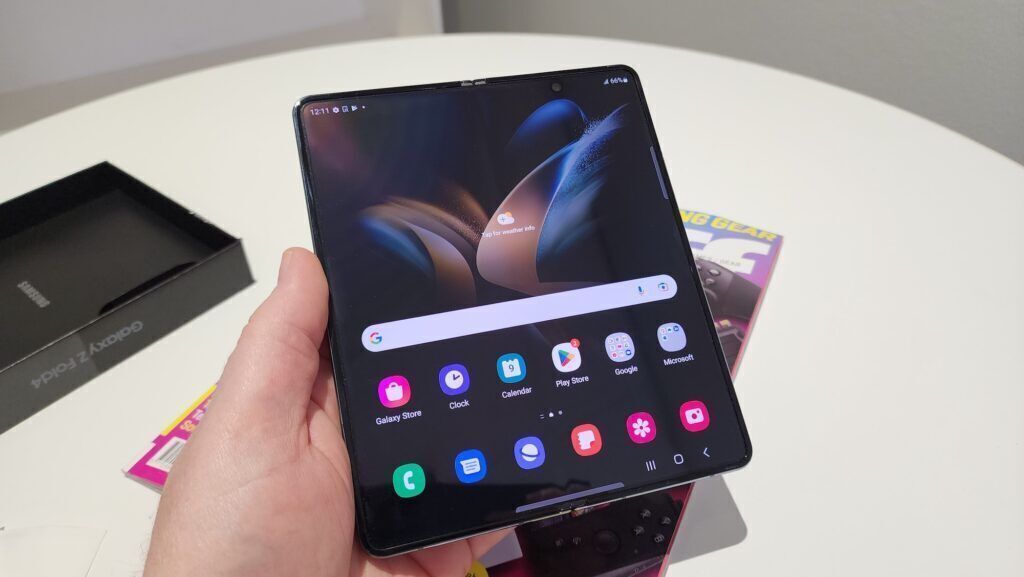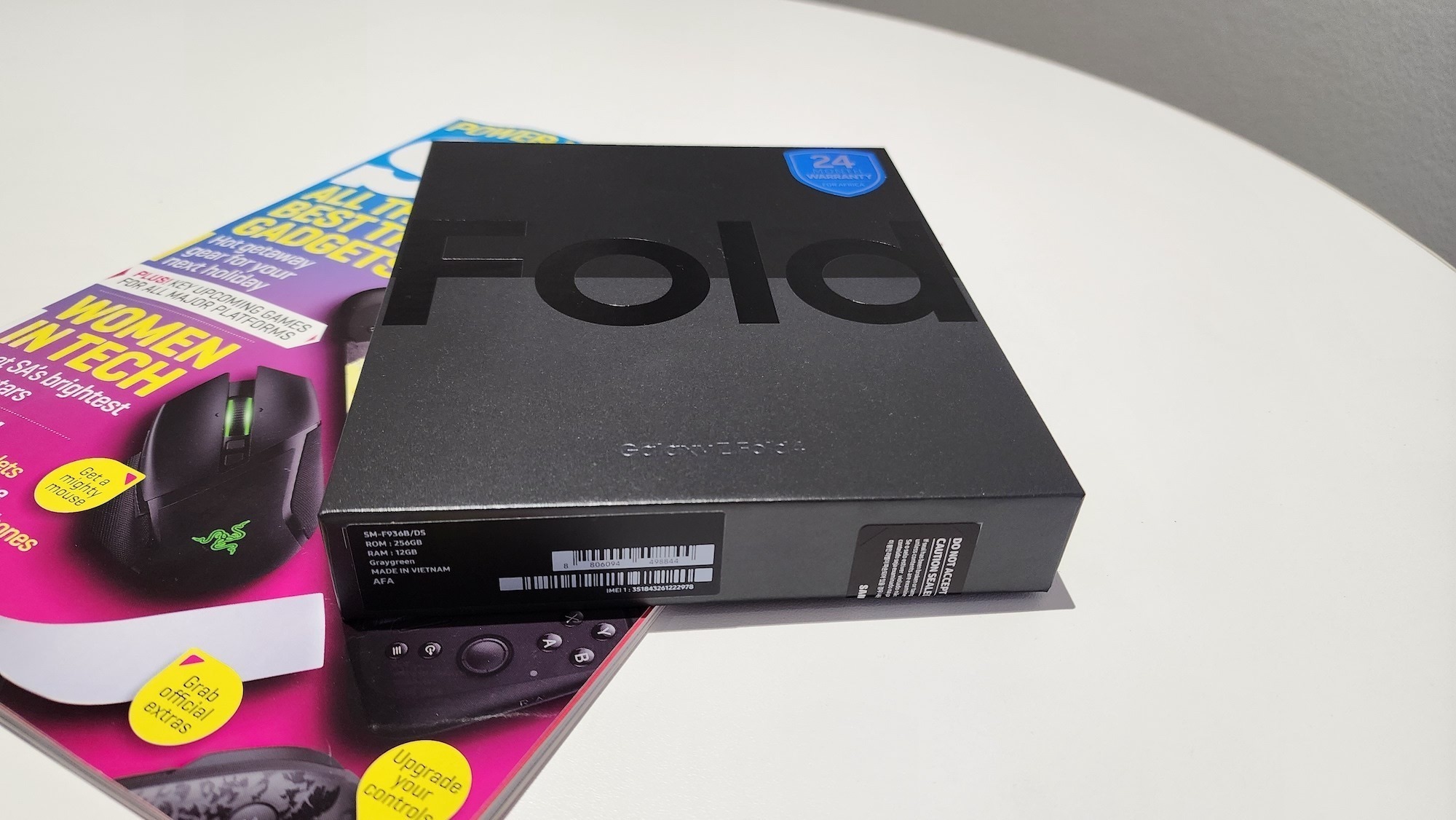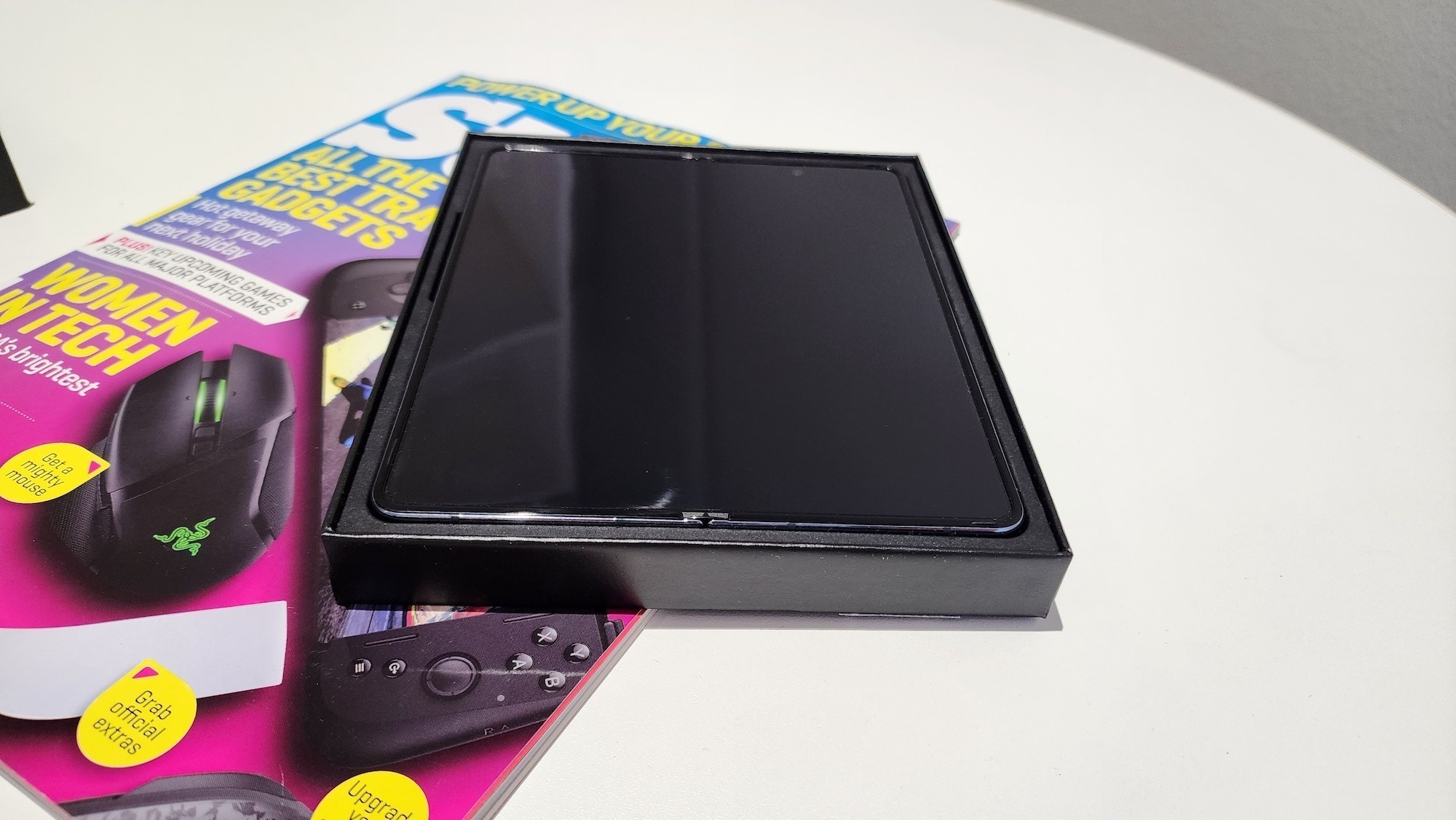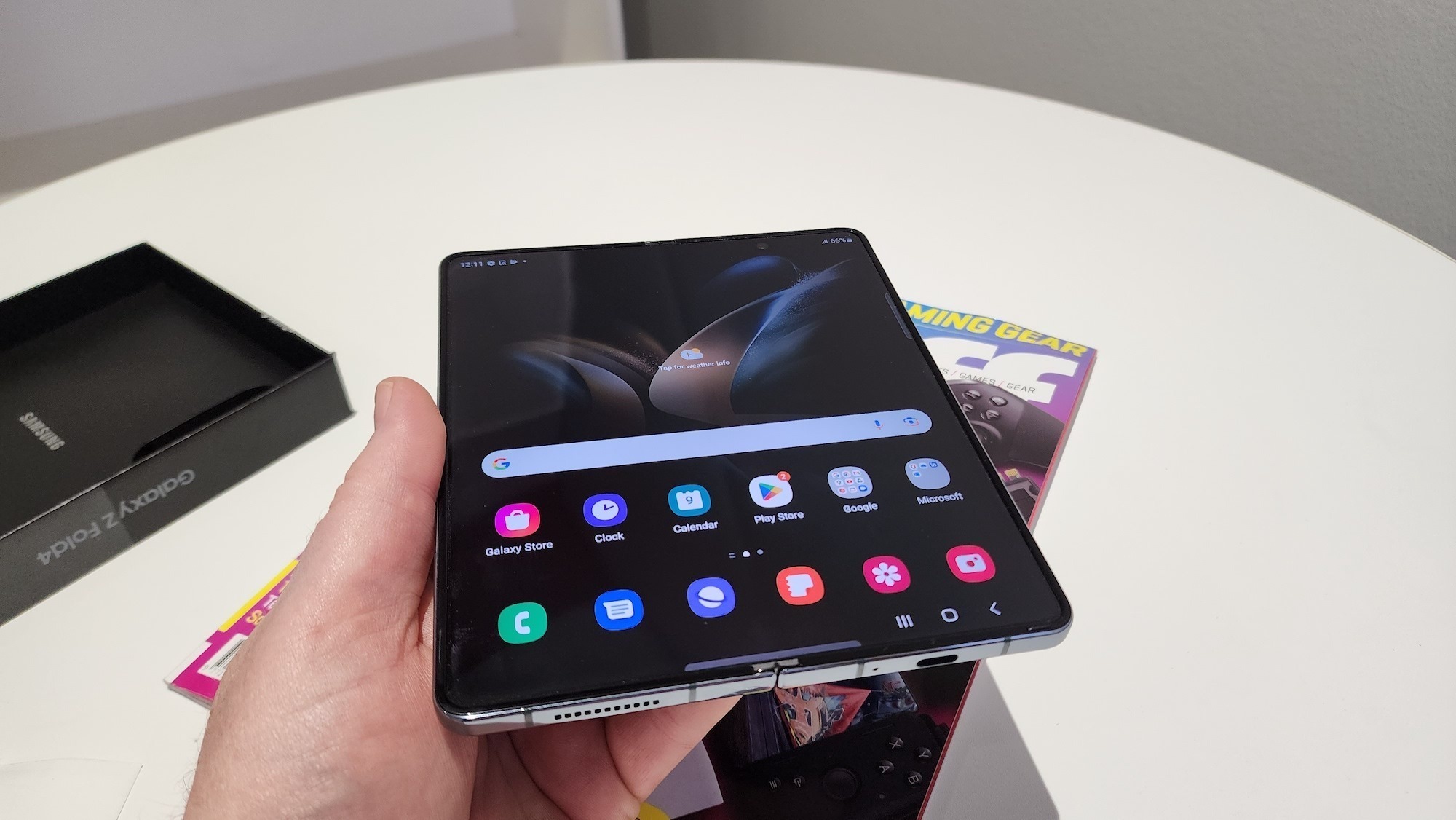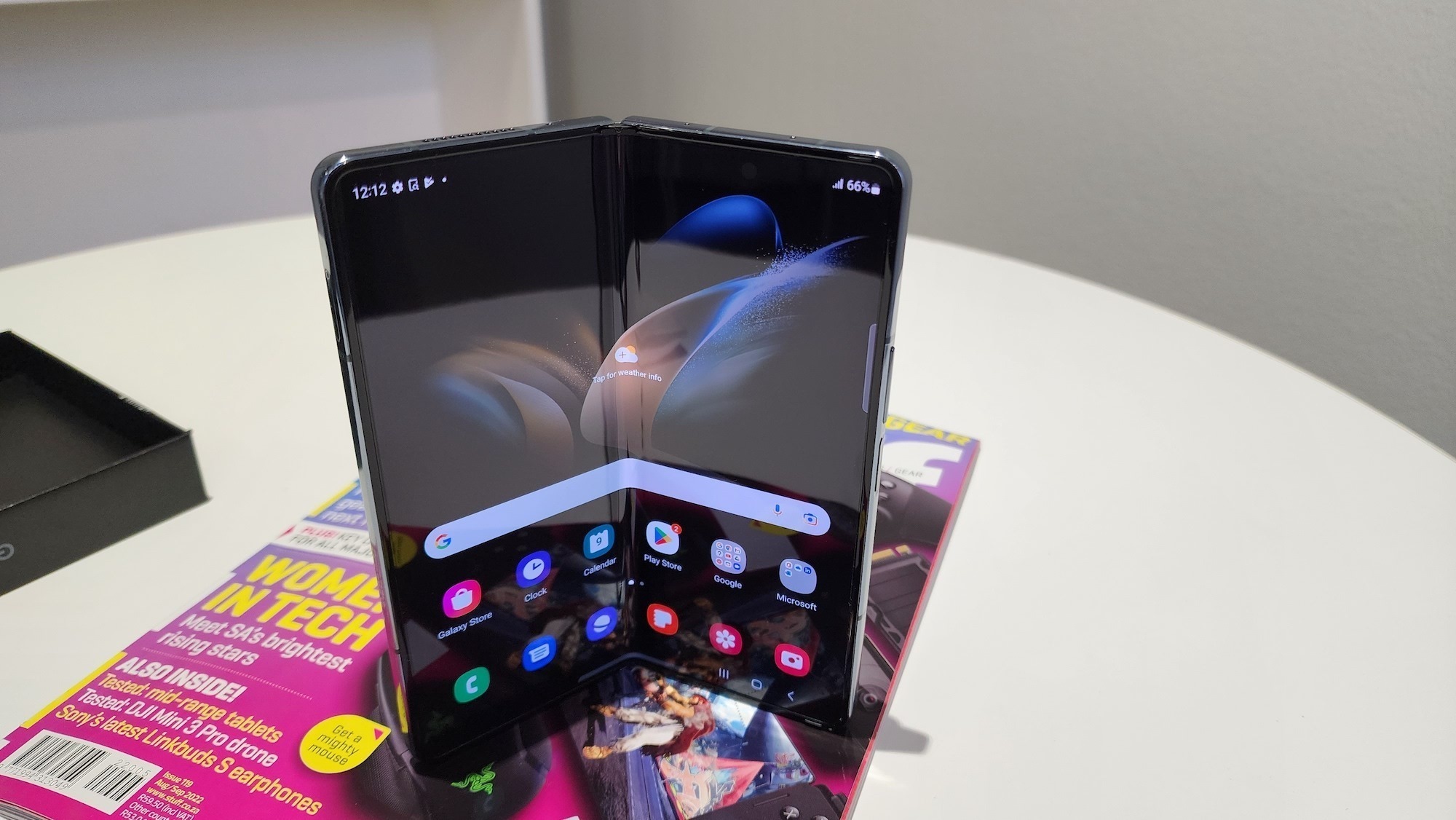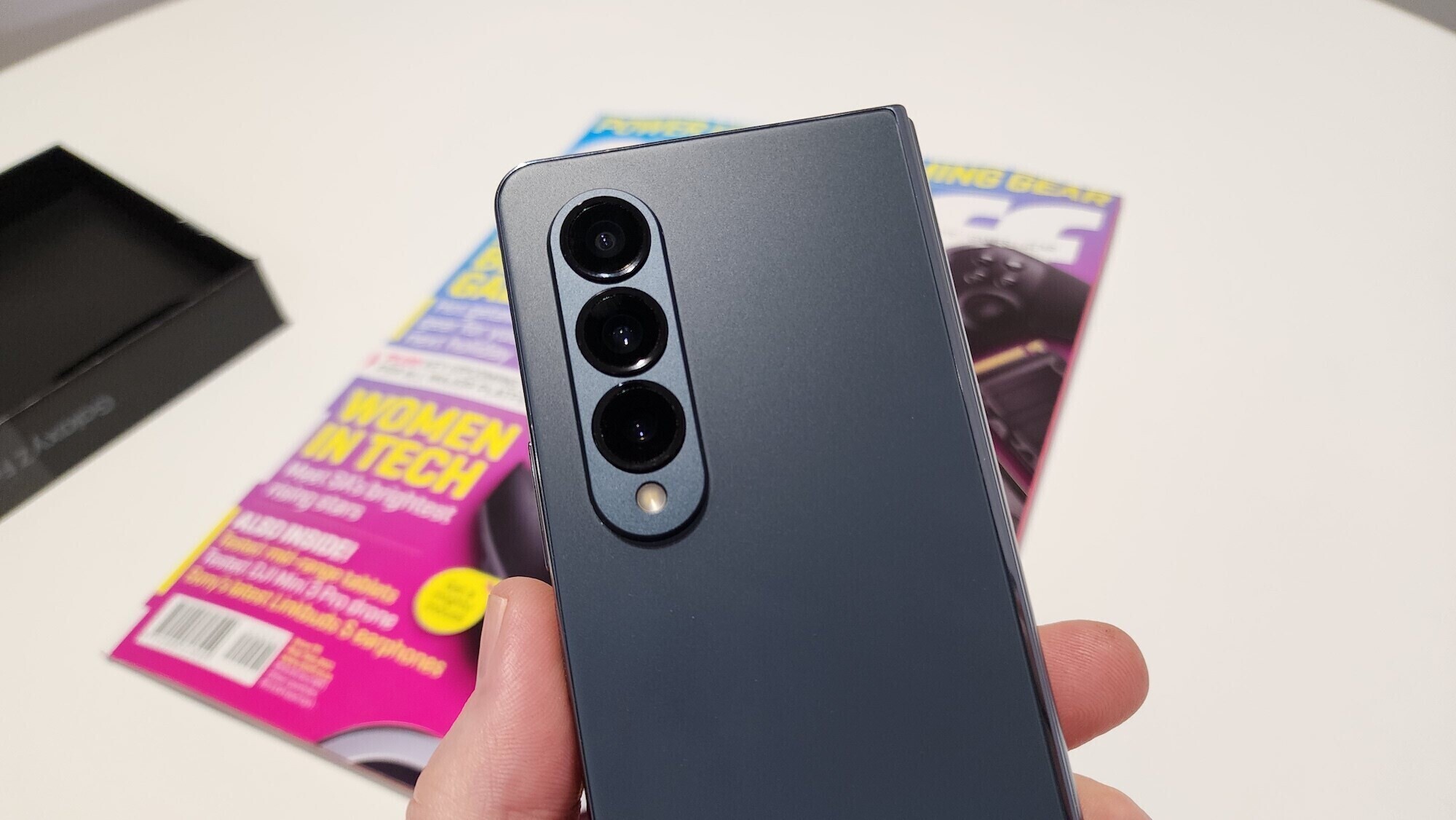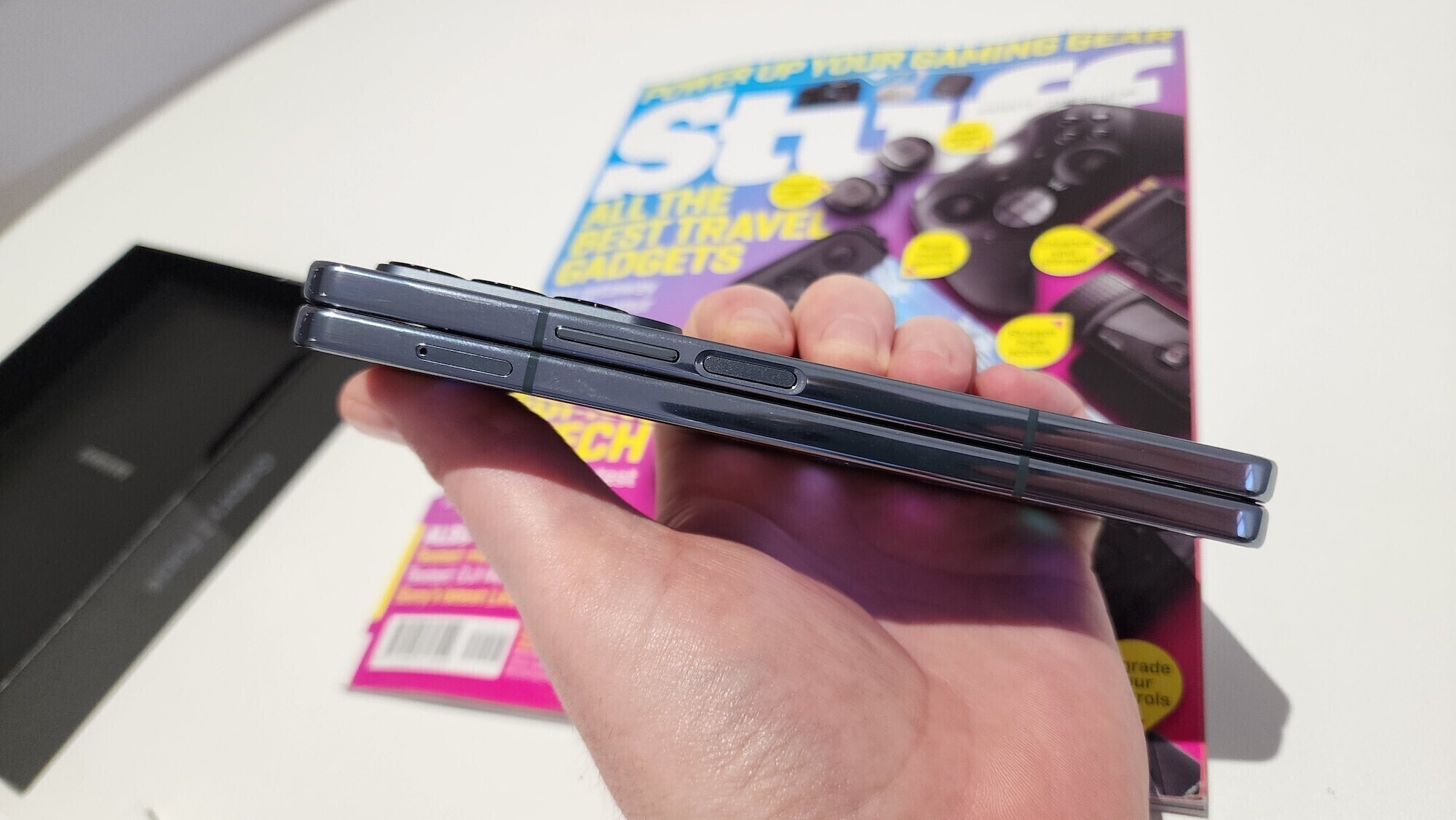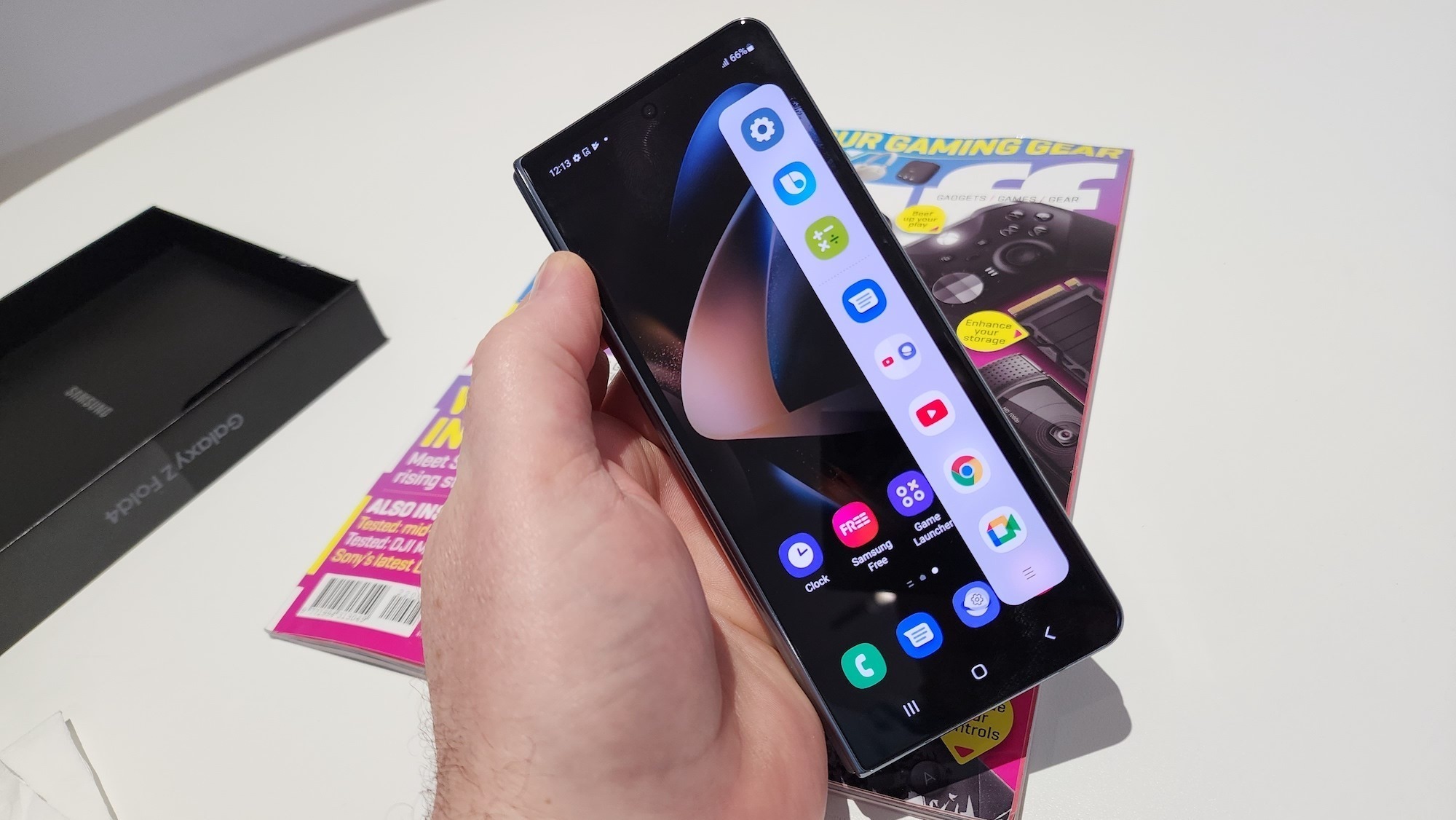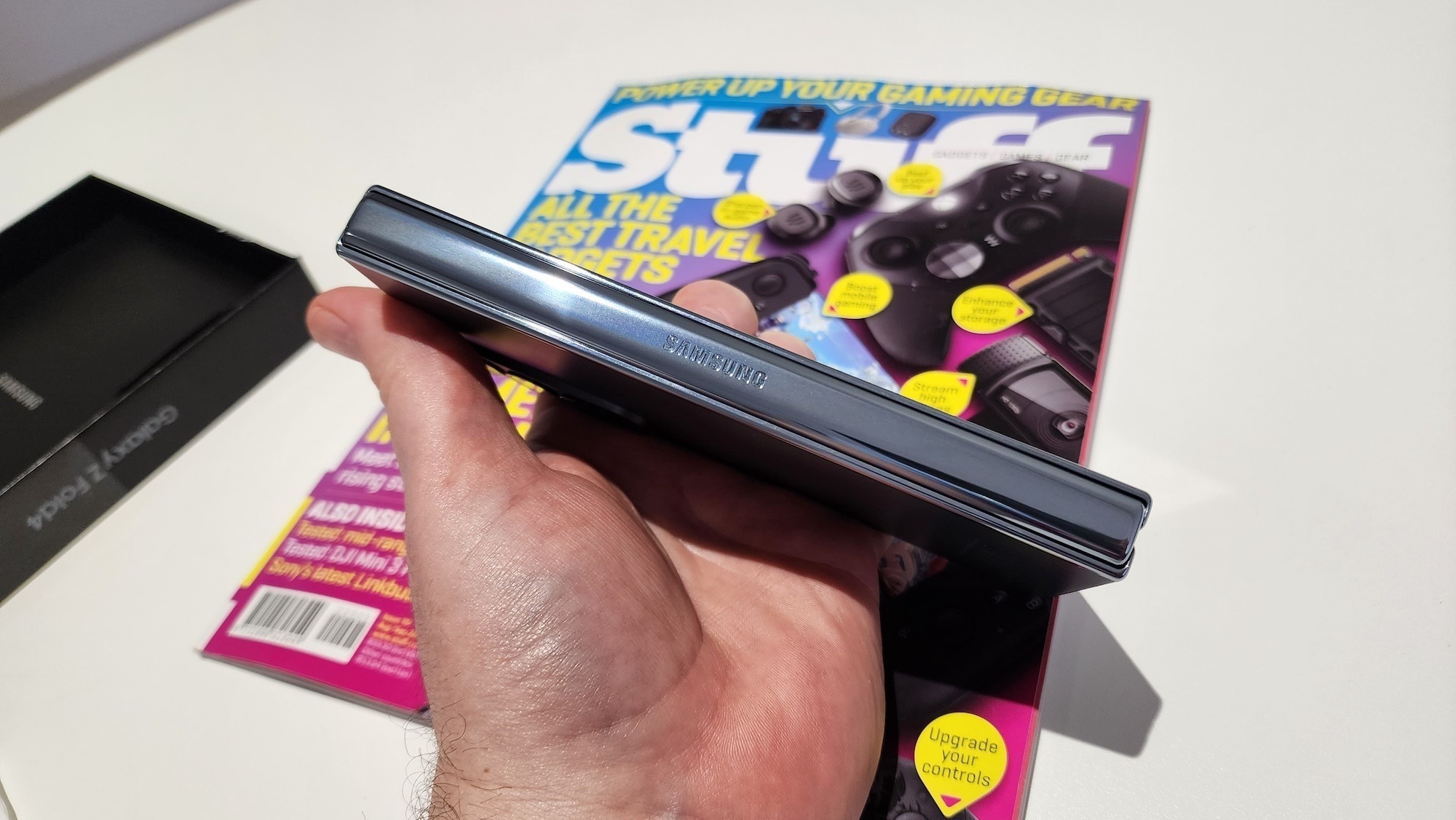Quite often, when a company has landed on a decent design for something, it’ll stick around for a while. There’s no point in going to all that effort for a single sales cycle. There’s probably a psychologist somewhere who determines the optimum time to keep a design. They certainly told Samsung that the Galaxy Z Fold 4 could look more or less identical to the Galaxy Fold 3.
It makes sense, from a business perspective. Ever since the Galaxy S6, Samsung’s hung onto a design for at least two years. The Galaxy Fold 4 shouldn’t be an exception and yet… given how much Samsung’s asking for a folding device, we’re expecting some more visual effort. Alas, it’s what’s on the inside that’s important in 2022. Since when has that been a good idea?
New year, same you
We’re being quite honest about Samsung sticking to the same design. If the phone hadn’t leapt from a box marked ‘Galaxy Fold 4’, we would have mistaken it for 2021’s folding handset. Everything is in the same place. The edges are identical. The camera bump hasn’t changed so much as a millimetre. Okay, that might be an exaggeration but a naked-eye examination can’t tell the difference.
That’s not a dealbreaker, obviously. The Fold 3 was a great phone if you could afford the asking price, but something to tell the new kit apart from its ancestor might have been nice. Heck, even the shade of grey from this year’s review model matches last year’s smartphone.
What we’re saying is: If looks are all that’s important to you and you already own the Fold 3, you probably don’t need an upgrade. Just clean your phone and tell everyone it’s the Fold 4. Nobody will know the difference unless they sit and strip it down to the chassis. And if that happens, you’ve got bigger problems.
Difference engine
There are actually differences in the Fold 4’s body ranging from 3mm to 0.1mm. Overall, Samsung’s newer phone is a little smaller and lighter. It’s almost impossible to tell the difference unless they’re side-by-side, however. The same goes for the 7.6in (unfolded) display, which covers a larger surface area in the Galaxy Fold 4.
And then there are the 6.2in glass displays. Samsung’s thrown more pixels at the new phone’s displays, but you probably won’t see these changes unless you’ve got a measuring tape or monocle on hand. Another invisible change is the hinge. Samsung’s done something really interesting to save a bit of weight, but it has a side effect. Opening the Fold 4 makes a small but noticeable noise. It sounds like the screen is tearing, at least in our review model, but absolutely nothing harmful is happening to the display.
Other changes are more obvious, even if they’re just as invisible. Samsung’s stuffed 12GB of RAM and 256GB of storage into this one. Don’t get excited about the 512GB and 1TB models of the phone — they’re not (officially) coming to South Africa. There’s also a Snapdragon 8+ Gen 1 inside making sure everything’s ticking away nicely.
On short acquaintance, though, it’s hard to say what sort of difference the new specs offer. The phone’s snappy and responsive. We’ve yet to make it lag or stutter but that doesn’t tell us much. The Fold 3 was much the same.
Concrete results
One place we were able to locate actual changes was the camera. Not the front-facing cameras so much. Those are okay, as far as smaller lenses go. But Samsung’s packing in some heftier hardware for the Fold 4 over the three 12MP sensors that populated the Fold 3. Here, you can expect to find a 50MP main lens, a 10MP telephoto, and a 12MP ultrawide. It sounds, on paper, like the loadout you’d find in a standard high-end smartphone. Performance suggests the same thing.
We only took the Galaxy Fold 4 out into the Stuff parking lot for a quiet game of ‘photograph whatever’s standing still’. Even in those few minutes, it’s obvious that the Fold 4 is capable of some great shots. Even better, it’s capable in just about any orientation. The rear cameras stay the rear camera no matter how you’re holding the phone. Unless you’re holding it completely backwards, in which case that 6.2in display isn’t lit anyway. Stop trying to be difficult.
The camera’s got a decent range and colour reproduction doesn’t seem as overenthusiastic as Samsung cameras tend to be. The better your lighting, the better it’ll perform. It really doesn’t like the Stuff offices, which are basically a lightbox for people to work in. Take it into an area with anything approaching natural light and its skills kick in. We’ll give it another test when the sun starts going down.
Samsung Galaxy Z Fold 4 5G initial verdict
If Samsung’s Galaxy Fold 4 is going to run into any trouble this year, it’ll be because it’s too similar to the Fold 3. Or because it costs R37,000. Maybe it’s the form factor. We hardly complain that every black rectangular smartphone looks the same as it did the year before. There’s more to this type of phone, so there are more identical points to notice. Well, we’ve noticed. Even so, this feels like Samsung’s best folding phone to date. On paper, it certainly is. The major question facing users is: Is this enough to make you upgrade? Our initial feeling? If you’ve got the first Fold, absolutely upgrade. If you bought the Fold 3… you’re good for another year. Check out our full review in a short while, after we’ve had some more time with the Galaxy Fold 4.

